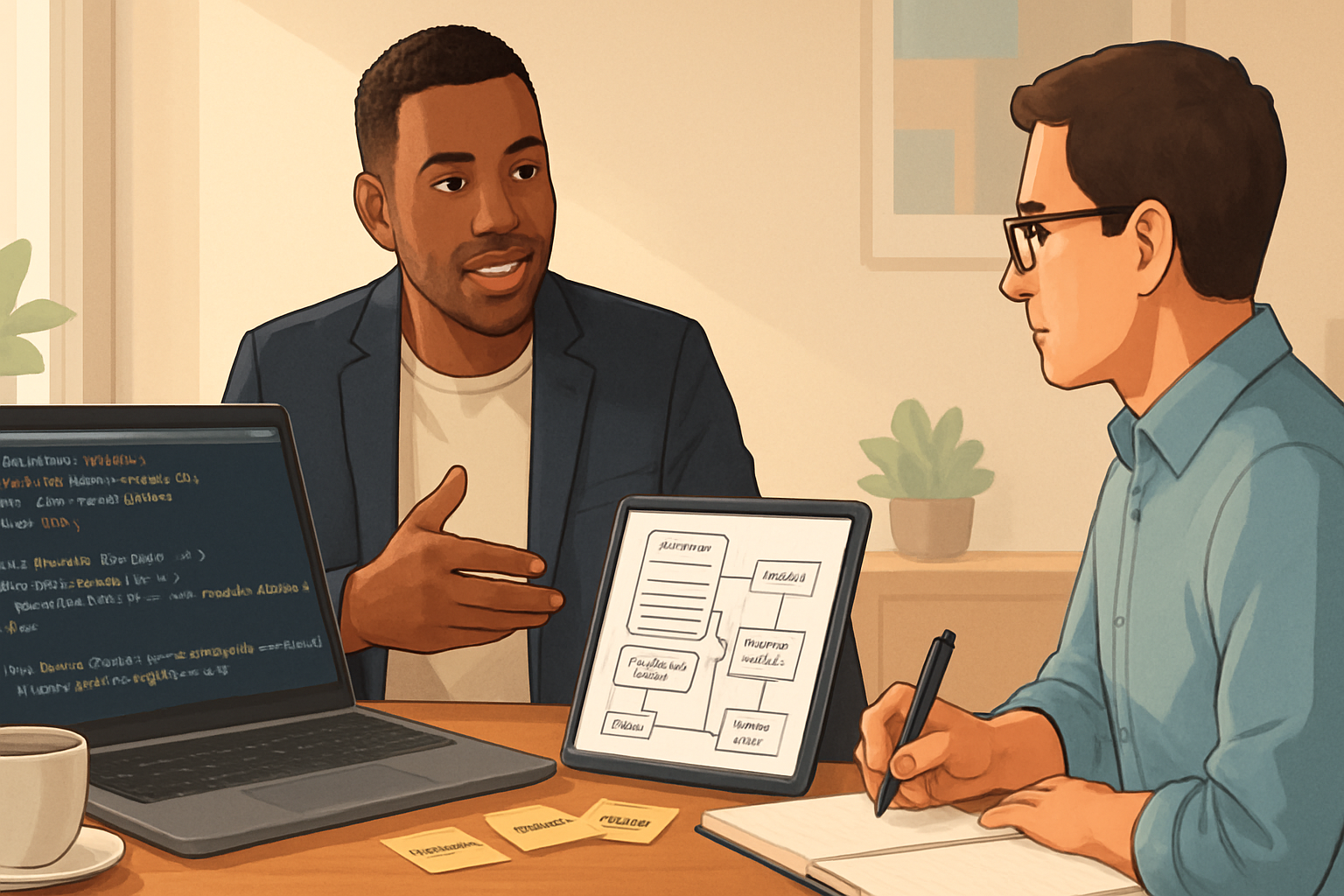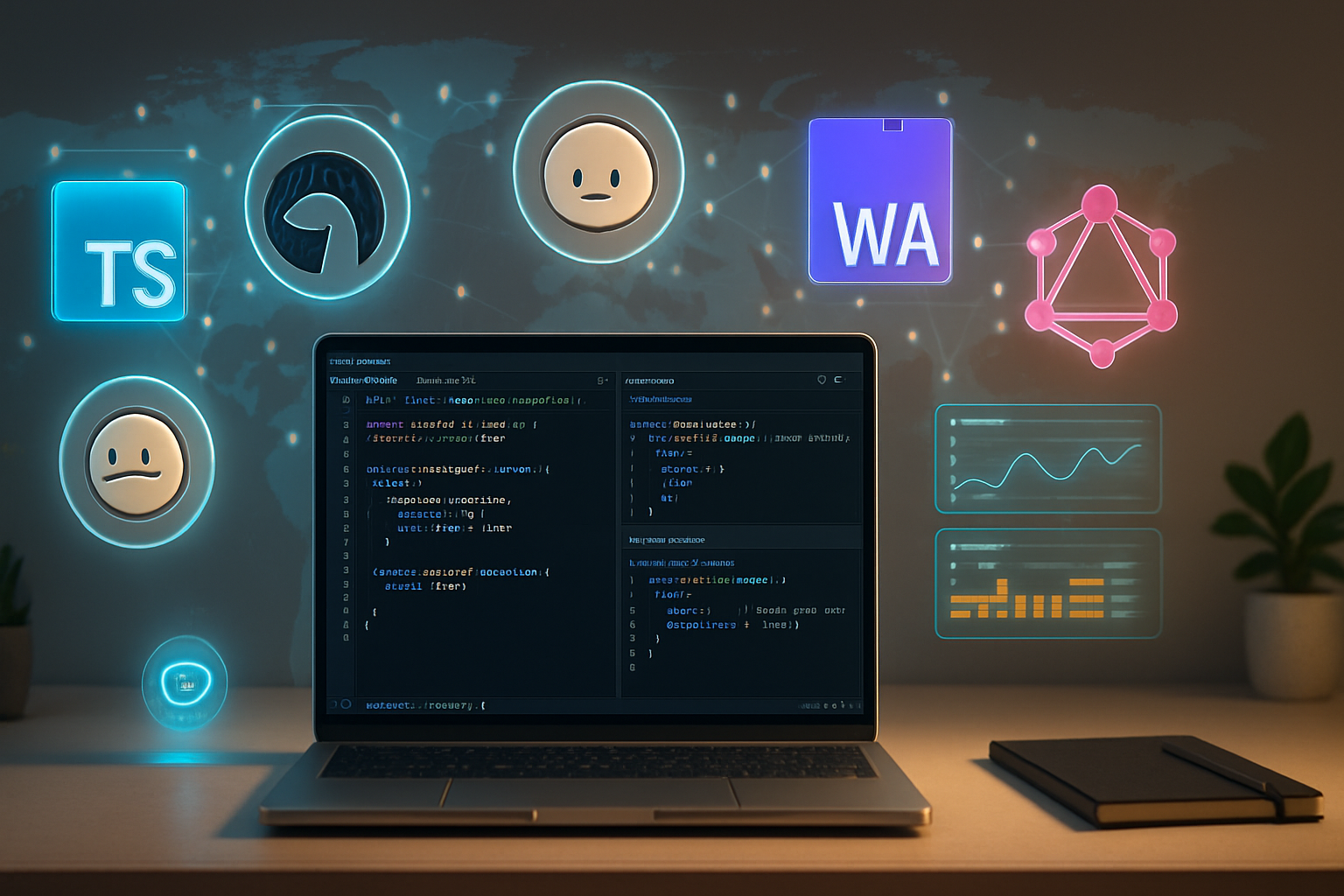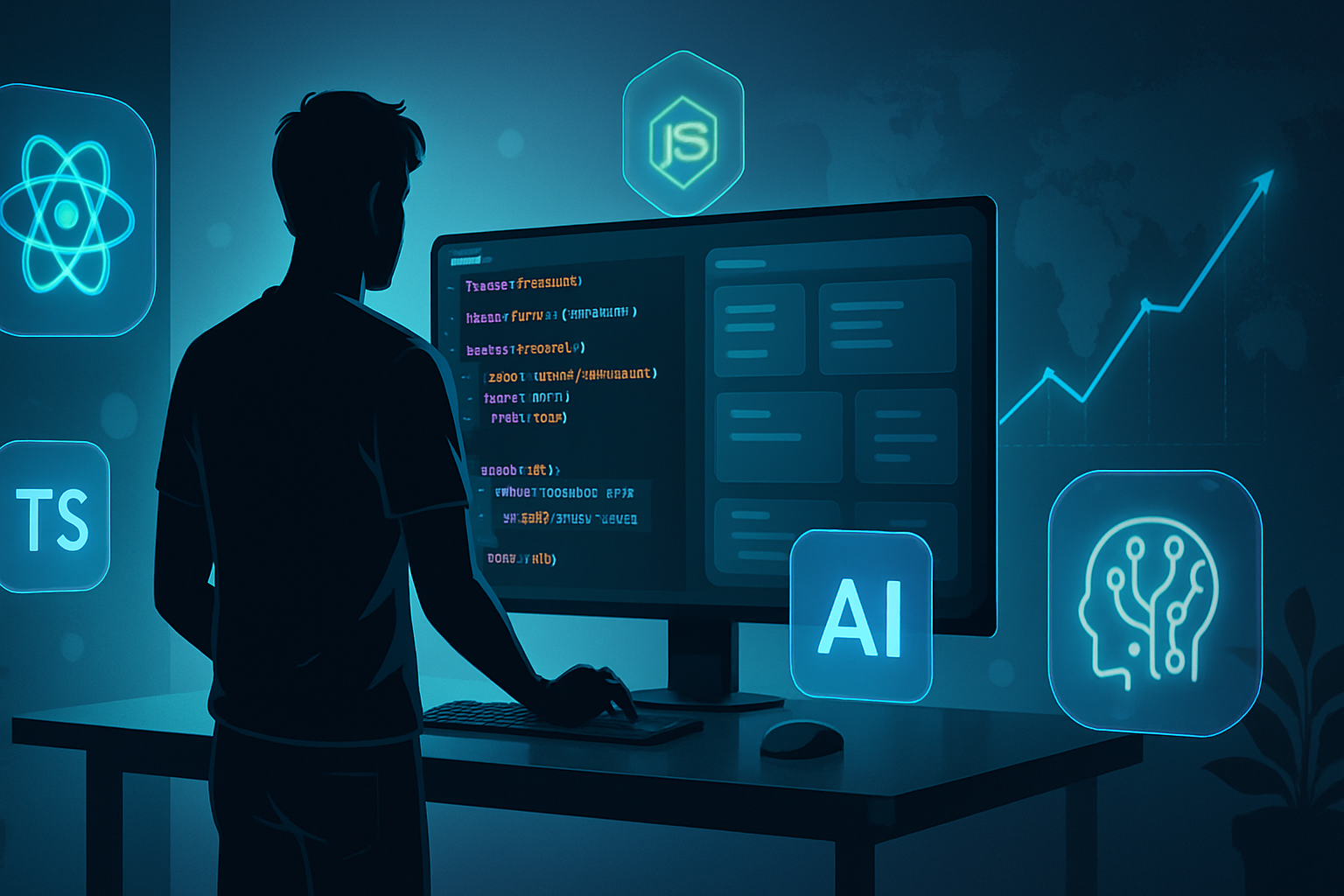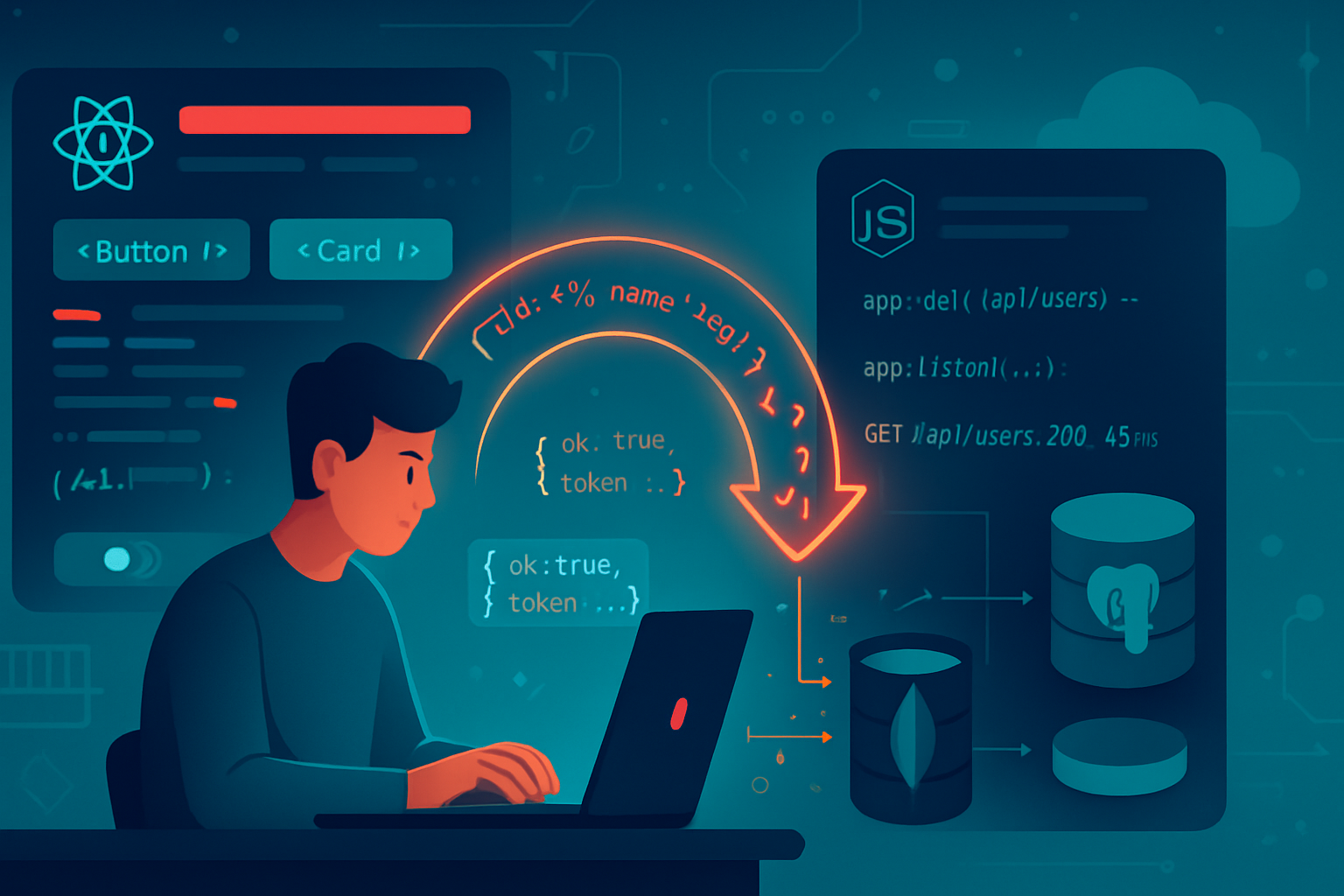· career · 6 min read
Mastering the Amazon Frontend Interview: The JavaScript Skills You Can't Ignore
A deep-dive guide to the JavaScript skills, frameworks, problem-solving techniques, and practical exercises you must master to succeed in Amazon frontend interviews - with sample questions, code snippets, and a study plan.
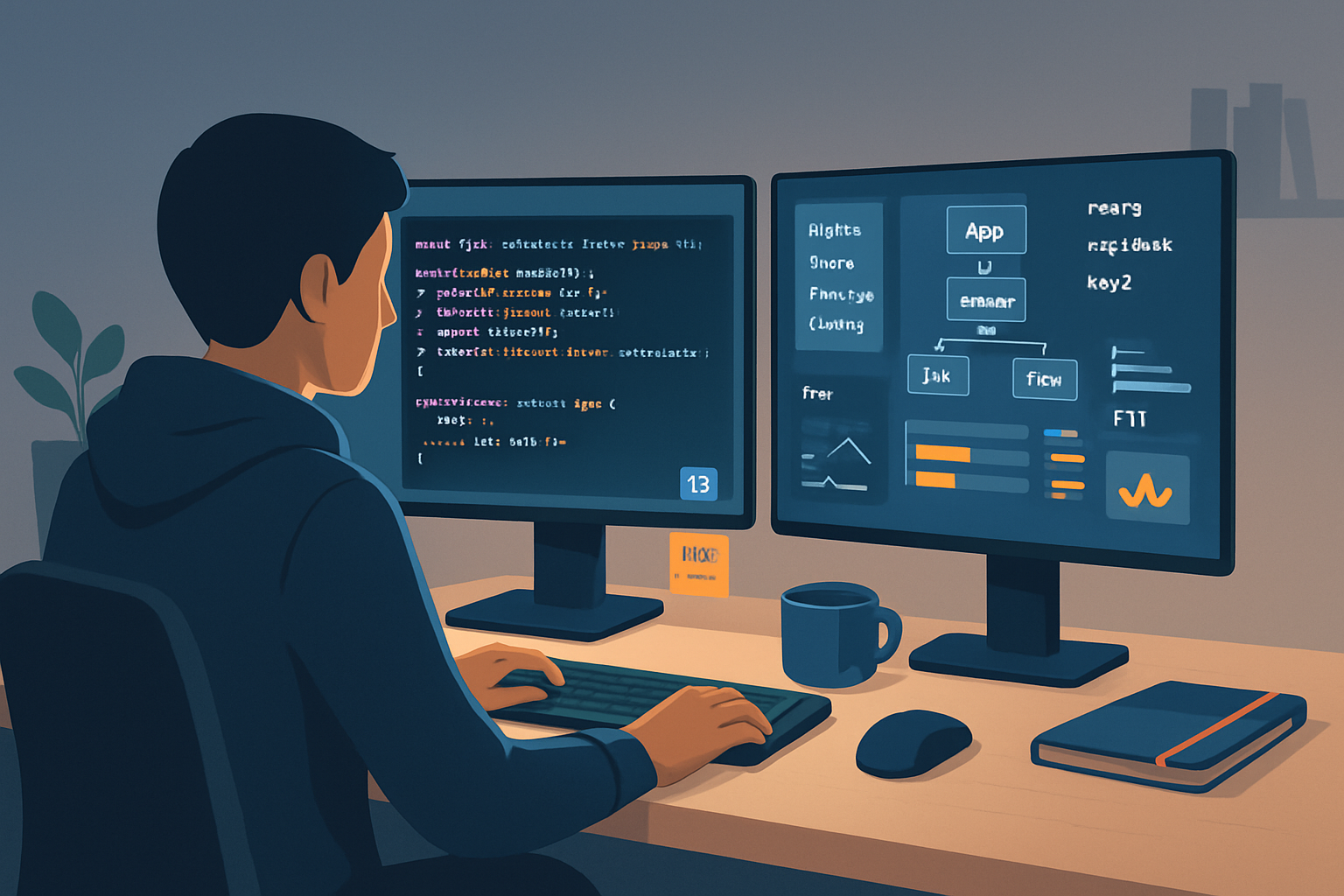
Why this guide matters
Amazon frontend interviews test more than whether you can write working UI code. Expect a blend of algorithmic problem-solving (in JavaScript), strong understanding of browser fundamentals, React expertise, performance and architecture questions, and behavioral alignment with Amazon’s leadership principles. This guide focuses on the JavaScript skills and adjacent frameworks that will move the needle fastest.
High-level interview areas to cover
- Core JavaScript and language features: ES6+ features, scoping, closures, prototypes, event loop and async behavior, memory model and GC patterns.
- Data structures & algorithms in JavaScript: arrays, sets, maps, trees, graphs, common algorithms (sorting, searching), complexity reasoning.
- React and modern frontend frameworks: component design, hooks, reconciliation, SSR/CSR tradeoffs, state management patterns.
- Browser internals and performance: layout/paint/reflow, critical rendering path, lazy loading, memoization, virtualization.
- Practical engineering topics: bundling (code-splitting), TypeScript, testing (unit, integration, E2E), accessibility, security basics.
- System / feature design: breaking down frontend system requirements, API contracts, and tradeoffs for scale and maintainability.
- Behavioral/Leadership Principles: how you approach tradeoffs, ownership, and quality.
Core JavaScript skills you can’t ignore
1) The foundations (must-have)
- Variable types & coercion, equality (== vs ===). Understand pitfalls.
- Scopes, hoisting, closures and lexical environment.
- Prototypes and prototype inheritance vs classes.
- The event loop: microtasks vs macrotasks, Promises, async/await.
- Error handling and debugging strategies.
Recommended reading: MDN JavaScript reference: https://developer.mozilla.org/en-US/docs/Web/JavaScript
2) Modern ES features & idioms
- Arrow functions, destructuring, rest/spread, default params.
- Modules (import/export), dynamic import.
- Optional chaining, nullish coalescing, BigInt, globalThis.
Practical tip: be fluent in writing concise, idiomatic JS - interviews reward clarity.
3) Asynchronous programming patterns
- Promises, async/await; error propagation and cancellation patterns.
- Concurrency control patterns (throttling, debouncing, promise pools).
- Event-driven programming, WebSockets/Server-Sent Events basics.
See concurrency example below (Promise pool pattern).
4) Memory, performance, and browser APIs
- Understand closures as memory retention sources and how to avoid leaks.
- DOM vs virtual DOM: when DOM ops are expensive.
- Browser APIs: Fetch, localStorage, History API, IntersectionObserver.
MDN Browser APIs: https://developer.mozilla.org/en-US/docs/Web/API
Frameworks & ecosystem (what to prioritize)
Amazon frontend teams mostly use React or React-like stacks. Focus on:
- React fundamentals, hooks, lifecycle equivalence, reconciliation.
- Next.js and SSR concepts (routing, data fetching, pre-rendering) - useful for system-level questions.
- TypeScript for safer code; many interviews expect at least familiarity with types and generics.
- Testing: Jest + React Testing Library for unit/integration; Cypress for E2E.
- State management: Context API, Redux, and modern lightweight alternatives (Zustand). Know tradeoffs.
React docs: https://reactjs.org TypeScript: https://www.typescriptlang.org
Problem-solving techniques for live coding
- Clarify requirements first: ask about input size, expected output, edge cases.
- Talk through complexity and approach before coding.
- Start with a correct, simple solution; then optimize (iterate toward O(n) where possible).
- Write clean code, name variables well, and include simple tests or examples.
- Handle edge cases and state your assumptions if you can’t check them.
Practice algorithmic problems on LeetCode or similar platforms: https://leetcode.com
Practical exercises and solutions (JavaScript)
Exercise 1 - Implement debounce
Problem: Create a debounce(fn, wait) that delays invoking fn until wait ms have passed since the last call.
Hints: use setTimeout and clearTimeout; preserve this and pass-through arguments.
Solution:
function debounce(fn, wait) {
let timer = null;
return function (...args) {
const ctx = this;
if (timer) clearTimeout(timer);
timer = setTimeout(() => {
timer = null;
fn.apply(ctx, args);
}, wait);
};
}
// Complexity: O(1) per call (amortized). Memory O(1).Why interviewers like it: tests understanding of closures, timers, and binding.
Exercise 2 - Promise pool (limit concurrency)
Problem: Given an array of async functions (each returns a Promise), run at most N concurrently and resolve when all complete.
Solution (Promise pool):
async function promisePool(tasks, concurrency) {
const results = [];
let i = 0;
async function worker() {
while (i < tasks.length) {
const index = i++;
try {
const res = await tasks[index]();
results[index] = { status: 'fulfilled', value: res };
} catch (err) {
results[index] = { status: 'rejected', reason: err };
}
}
}
const workers = Array.from(
{ length: Math.min(concurrency, tasks.length) },
worker
);
await Promise.all(workers);
return results;
}Complexity: runs each task once; concurrency bounded by provided parameter.
Why interviewers like it: shows you can reason about concurrency and async scheduling.
Exercise 3 - Flatten nested arrays (iterative & recursive)
Problem: Flatten an arbitrarily nested array of values.
Solution (iterative stack):
function flatten(arr) {
const res = [];
const stack = [...arr];
while (stack.length) {
const el = stack.pop();
if (Array.isArray(el)) {
// push children to stack to process them
for (let i = el.length - 1; i >= 0; i--) stack.push(el[i]);
} else {
res.push(el);
}
}
return res.reverse();
}Complexity: O(n) time, O(n) space.
React-specific topics you should master
- JSX and the reconciliation algorithm: understand keys, diffing, and when rerenders happen.
- Hooks: Rules of hooks, how useState/useReducer differ, when to use useMemo/useCallback, and common pitfalls.
- Performance: memoization of components, virtualization (react-window), avoiding unnecessary renders.
- SSR vs CSR vs hydration and tradeoffs for performance and SEO.
- Component design: Single responsibility, composition over inheritance, container/presentational split.
- Testing components: writing accessible tests using React Testing Library.
React Performance docs: https://reactjs.org/docs/optimizing-performance.html
System-level and architecture thinking
Frontend interviews can include higher-level design questions (“Design a high-scale image gallery UI”). For those:
- Break the feature into parts: data fetching, caching, pagination/virtualization, error states, offline behavior.
- Consider client-side vs server-side rendering and caching strategies (CDN, edge caching, client cache invalidation).
- Propose telemetry and observability: metrics that matter (TTI, LCP, CLS).
- Call out security and accessibility constraints.
When answering, draw diagrams (if allowed), explain tradeoffs, and quantify (e.g., expected users, payload sizes).
Behavioral readiness - Amazon Leadership Principles (short)
Amazon values customer obsession, ownership, bias for action, dive deep, and invent & simplify. When you discuss technical tradeoffs:
- Explain why a chosen approach serves customers (performance, reliability, UX).
- Show ownership by proposing monitoring, rollbacks, and test strategies.
- Use examples in your career to illustrate leadership principles.
Amazon leadership principles reference: https://www.amazon.jobs/en/principles
Interview day checklist
- Environment: have a quiet room, stable internet, and a working microphone.
- Tools: be comfortable with the shared editor (CoderPad/CodeSignal) and running JavaScript snippets in the console.
- Walkthrough habit: always restate the problem and your assumptions, then outline the approach.
- Timeboxing: allocate time for design/explaining, coding, testing, and optimizing.
Weekly study plan (8 weeks example)
- Weeks 1–2: Core JS - closures, prototypes, async/await, event loop, typical interview problems.
- Weeks 3–4: React deep dive - hooks, performance, SSR/Next.js fundamentals, TypeScript basics.
- Weeks 5–6: System design + architecture - design small features, practice diagrams and tradeoff arguments.
- Weeks 7–8: Mock interviews, timed coding on LeetCode, debugging practice, behavioral stories tuned to Amazon LPs.
Resources: Frontend Masters (paid) and free tutorials on freeCodeCamp: https://www.freecodecamp.org
Final tips - what interviewers notice
- Clear communication: talk through your thought process and tradeoffs.
- Correctness + clarity: a slower correct solution is better than a fast-but-buggy one.
- Edge-case thinking: handle nulls, empty arrays, very large inputs.
- Tradeoff awareness: show you can balance engineering complexity, performance, and maintainability.
Further reading & resources
- MDN JavaScript: https://developer.mozilla.org/en-US/docs/Web/JavaScript
- React docs: https://reactjs.org/docs/getting-started.html
- TypeScript: https://www.typescriptlang.org
- Practice problems: https://leetcode.com
- Practical frontend courses: https://frontendmasters.com
- freeCodeCamp tutorials: https://www.freecodecamp.org
Good luck - focus on fundamentals (language & algorithms), React fluency, architecture thinking, and clear communication. Those are the JavaScript skills and attitudes Amazon interviewers are evaluating.
